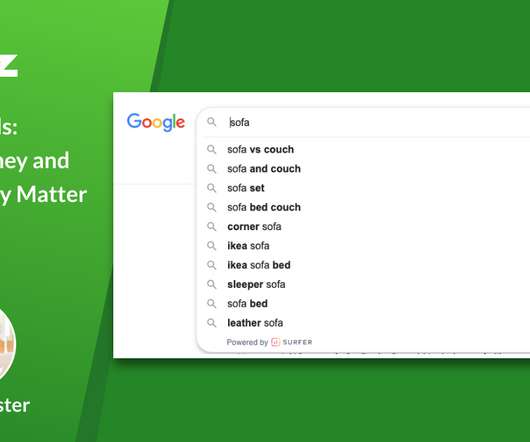LSI Keywords: What Are They and Why Do They Matter in SEO?
Moz
MARCH 16, 2021
Posted by JessicaFoster The written content on your website serves to not only inform and entertain readers, but also to grab the attention of search engines to improve your organic rankings. LSI keywords are based on the concept of latent semantic analysis, which is a technique for understanding natural language processing.













Let's personalize your content